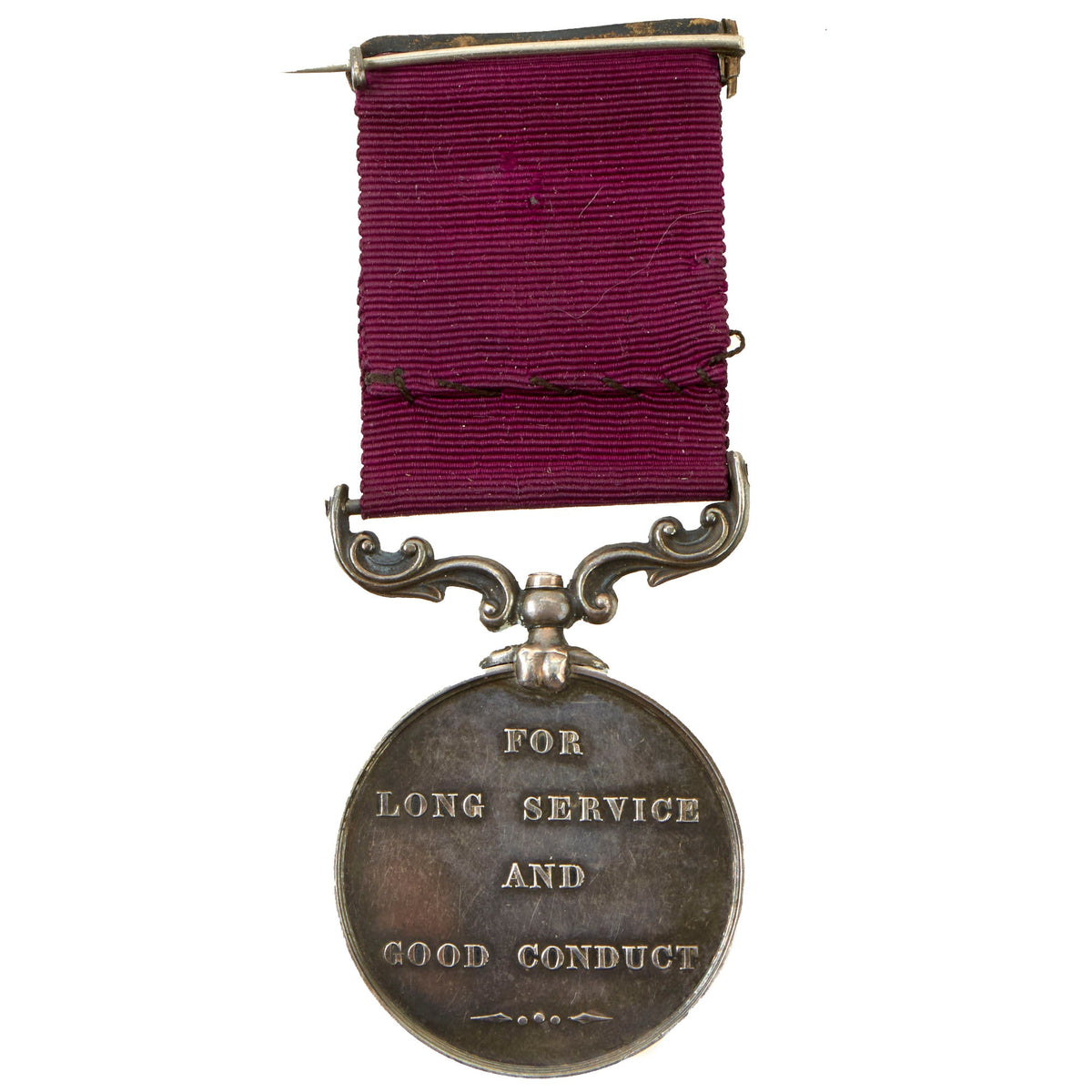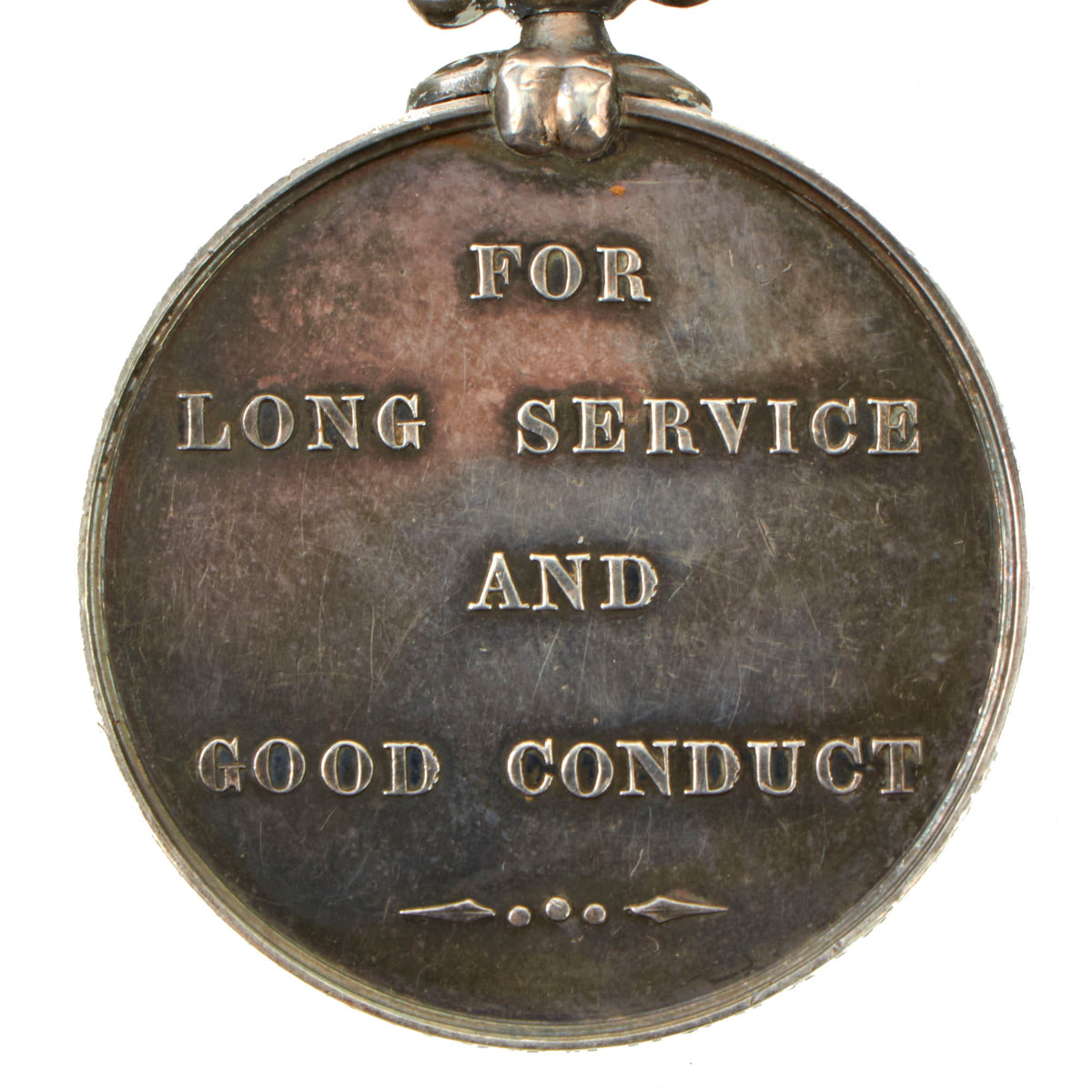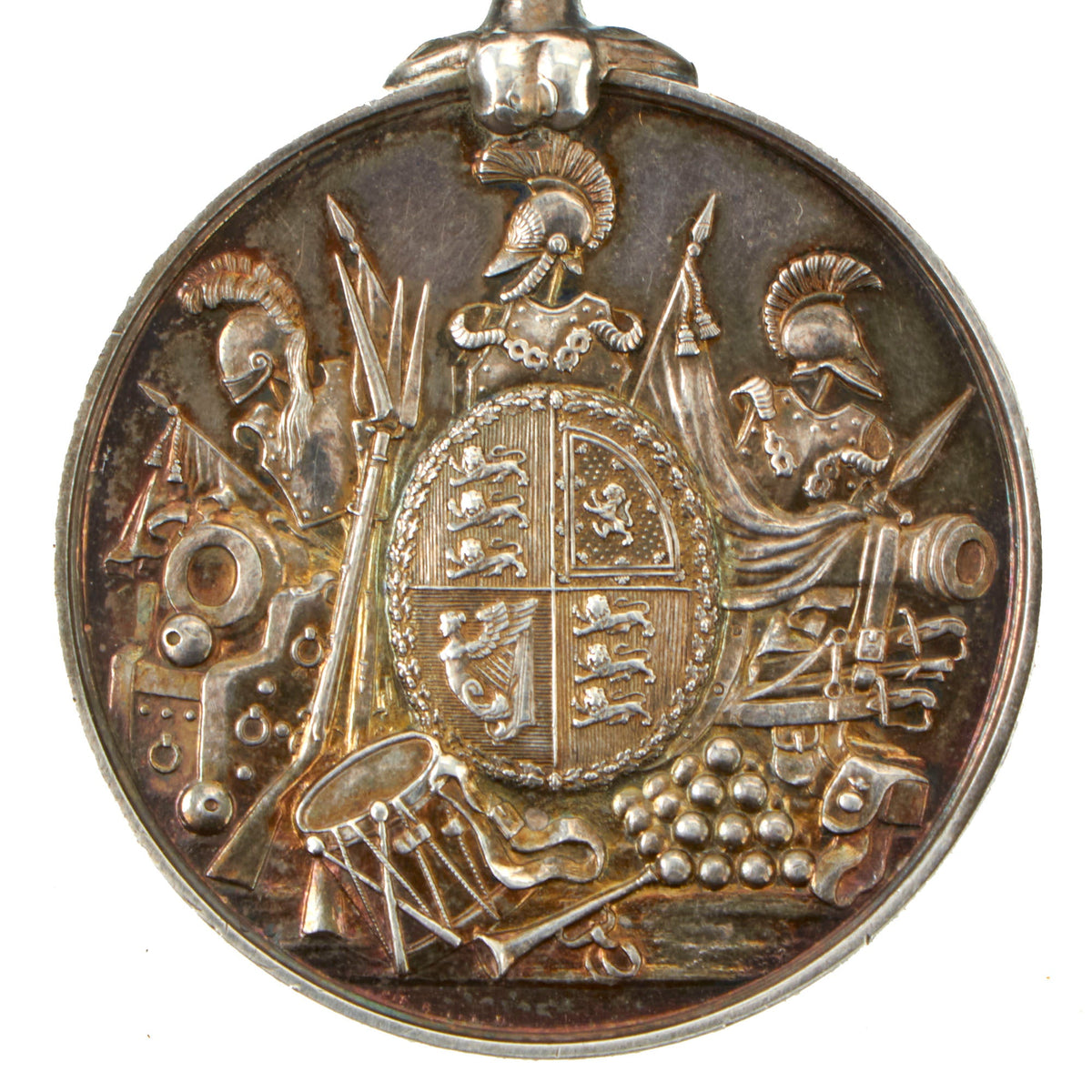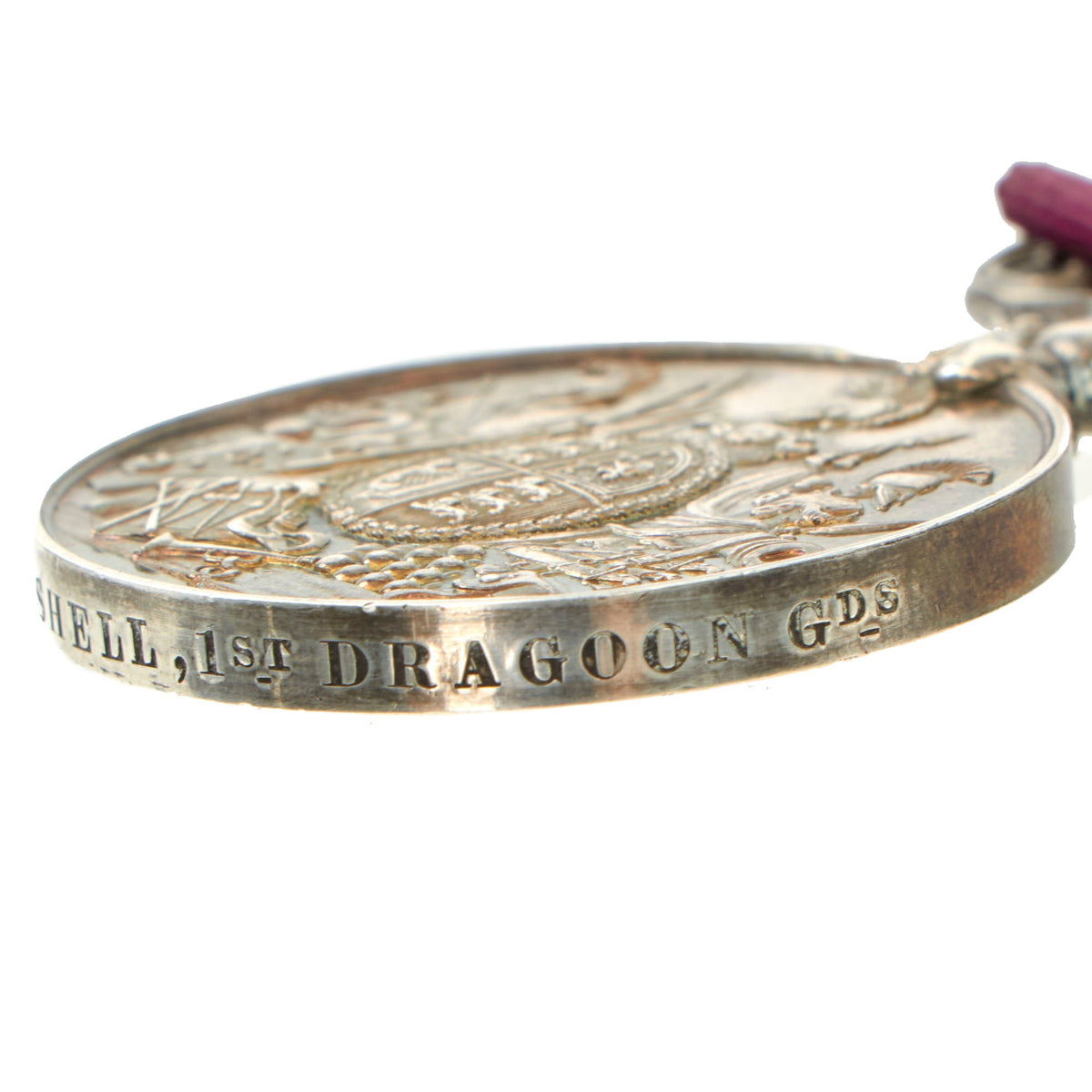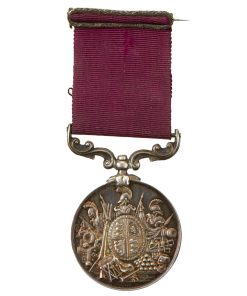Original British Anglo-Zulu War Era Army Long Service and Good Conduct Medal (Small letters Victorian Version) For Sergeant Stephen Bushell, 1st Dragoon Guards – Regimental Number 301 Original Items
$ 295,00 $ 118,00
Original Item: Only One Available. The Army Long Service and Good Conduct Medal was instituted by King William IV in 1830. The medal remained in use for 100 years, until it was replaced by the Medal for Long Service and Good Conduct (Military) in 1930. During that time the reverse of the medal remained virtually unchanged, while the design of the obverse was altered during the reigns of Queen Victoria, King Edward VII and King George V.
The medal was initially awarded to soldiers in the ranks of the Regular Force who had completed 21 years of service in the infantry or 24 years in the cavalry like Sergeant Bushell from being in the Dragoons. From 1870 the qualifying period was reduced and the medal was awarded to Regular Force non-commissioned officers and men who had completed eighteen years of irreproachable service, irrespective whether the service was in the infantry or the cavalry.
The medal was struck in silver and is a disk, 36 millimeters (1.42 inches) in diameter and 3 millimeters (0.12 inches) thick. Apart from the different obverse designs that came into use with each successive monarch, the suspension of the medal evolved over the years from a small or large ring to a plain curved bar suspender, and eventually an ornamented scroll pattern suspender that was initially a swiveling type like this example and finally a fixed non-swivelling type.
Reverse
The reverse of all versions of the medal is smooth with a raised rim and bears the inscription “FOR LONG SERVICE AND GOOD CONDUCT” in four straight lines in the center. The inscription is underlined by two spear blades, which evolved from three tied balls between the two blades on early versions of the medal to three separate balls between the blades on later versions.
Ribbon
The ribbon was plain crimson from the medal’s institution until 1916, initially 1 inch (25 millimetres) wide for the early small ring suspender medals and thereafter 1+1⁄4 inches (32 millimetres) wide for the subsequent medals with a large ring or bar suspenders. The same plain crimson ribbon was used with the Victoria Cross, but with a miniature button emblem of the Cross worn on the ribbon bar in undress.
From June 1916 a new ribbon was used, at times crimson or sometimes reddish violet, and edged with 3 millimetres wide white bands.
As with nearly all other British medal, this one is rim engraved with the following information:
301. SERGT S. BUSHELL, 1ST DRAGOON GDS
Deciphering and locating military service records in the Pre-WWII era is a rather difficult task. Fortunately we were able to find out that Sergeant Stephen Bushell enlisted some time in 1858, where shortly after it appears that he was assigned to a Dragoons regiment. He has a pension date from when he retired some time in 1878.
The overall condition is quite nice and comes more than ready for further research and display.
Fast Shipping with Professional Packaging
Thanks to our longstanding association with UPS FedEx DHL, and other major international carriers, we are able to provide a range of shipping options. Our warehouse staff is expertly trained and will wrap your products according to our exact and precise specifications. Prior to shipping, your goods will be thoroughly examined and securely secured. We ship to thousands clients each day across multiple countries. This shows how we're dedicated to be the largest retailer on the internet. Warehouses and distribution centres can be located throughout Europe as well as the USA.
Note: Orders with more than one item will be assigned a processing date depending on the item.
Before shipping before shipping, we'll conduct a thorough inspection of the items you have ordered. Today, the majority of orders will be delivered within 48 hours. The delivery time will be between 3-7 days.
Returns
The stock is dynamic and we cannot completely manage it because multiple stakeholders are involved, including our factory and warehouse. So the actual stock may alter at any time. It's possible that you may not receive your order once the order has been made.
Our policy is valid for a period of 30 days. If you don't receive the product within 30 days, we are not able to issue a refund or an exchange.
You can only return an item if it is unused and in the same state as the day you received it. You must have the item in its original packaging.
Related products
Uncategorized
Uncategorized
Uncategorized
Uncategorized
Uncategorized
Uncategorized
Uncategorized
Uncategorized
Uncategorized
Australian WWII Owen MK1 Machine Carbine SMG Custom Fabricated Replica with Sling Original Items
Uncategorized
Uncategorized
Uncategorized
Angolan Rebel 1970s era 60mm Inert Display Mortar from Angolan Civil War Original Items
Uncategorized
Uncategorized
Uncategorized
Uncategorized
Band of Brothers ORIGINAL GERMAN WWII Le. F.H. 18 10.5cm ARTILLERY PIECE Original Items
Uncategorized
Uncategorized
Uncategorized
Uncategorized
Uncategorized
Uncategorized

